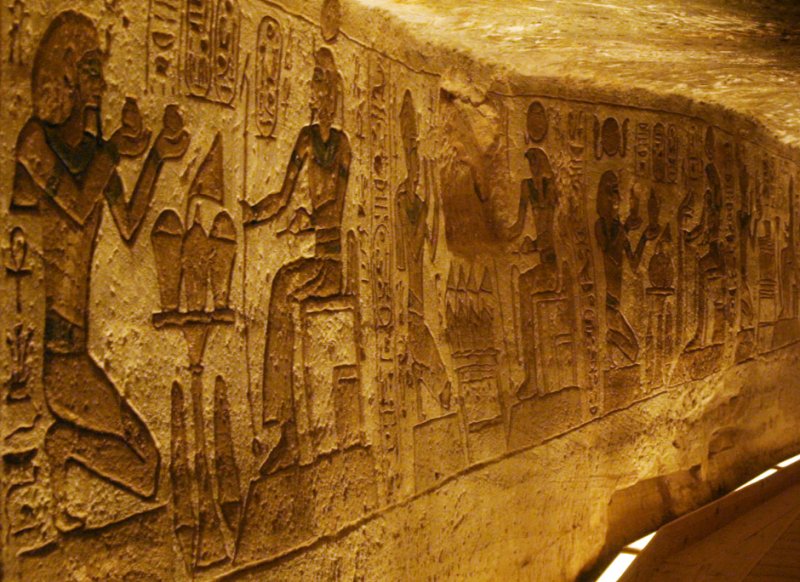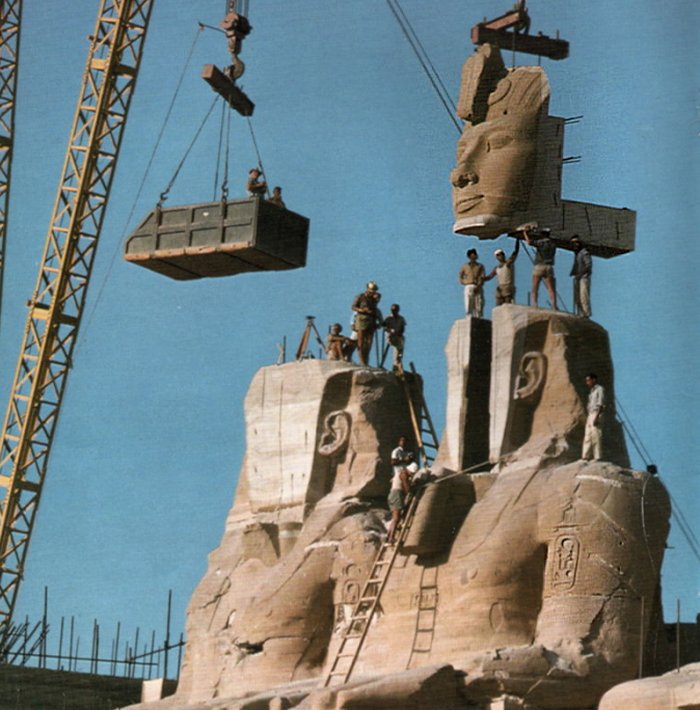Abu Simbel – Spectacular Ancient Egyptian Temples Unique In Design And Size
Angela Sutherland - AncientPages.com - Many spectacular structures of antiquity, such as the pyramids, temples of Luxor and Karnak, Ramesseum, Abu Simbel, and others, attest to ancient Egypt's superior civilization.
Abu Simbel - Image credit: Angel Aroca Escámez - CC BY-SA 3.0
One of them is Abu Simbel, now an archaeological site located in Muhafaz Aswan, on the West Bank of the Nile, in southern Egypt, close to the border with Sudan.
Built between 1264 and 1244 BC (or 1244 and 1224 BC) during the reign of Pharaoh Ramesses II, Abu Simbel represents a vast complex of two prominent temples reaching 56 m deep into the rock.
It took twenty years to carve out the temples of a solid mountainside on the West Bank of the Nile in Lower Nubia, close to the border with Sudan. One of the temples celebrates Ramses II's victory over the Hittite Empire at the Battle of Kadesh in 1274 BC. The other commemorates the pharaoh's love for his favorite queen, Nefertari.
Interior of Ramses II's temple at Abu Simbel. Image credit: qwelk - Public Domain
The entrance of the Great Temple is guarded by four (20 m high) giant statues representing Ramesses II seated on a throne and wearing the double crown of Upper and Lower Egypt. Inside, there are eight more of his sculptures. The statues of the king and his queen are about 10 m (33 ft) high.
Next to Ramesses's legs are smaller statues depicting his chief wife, Nefertari, his queen mother, Mut-Tuy (Tuya), his first two sons, and six daughters. The temple is dedicated to the pharaoh and the sun gods Amon-Ra and Ptah, the god of arts and crafts, and Ra-Horakty, the god of the "morning sun."
Without a doubt, the temples are unique in both design and size.
"The front of the main temple is 31 meters (102 ft) high. Cutting through two columned halls, the inner passage reaches 54.8 (180 ft) back into solid rock." 1
The decorations inside the first chamber are reliefs commemorating the battles of Ramesses II at the Battle of Kadesh.
Inside the great temple of Ramses II at Abu Simbel. Credit: Adobe stock - Nick Brundle
"The walls of the halls are covered with superbly preserved reliefs showing Ramesses conquering his enemies in the mighty battle of Kadesh that he fought in his fifth year as king. Almost 1500 figures of soldiers are carved and painted here. Side chambers off the hall were perhaps store chambers for the temple's wealth." 1
There are also images of the deities to whom the temple was dedicated and of Ramesses II himself. In addition, the rooms are decorated with precious paintings and reliefs.
The Small Temple honors Hathor, the goddess of love and beauty, and Queen Nefertari, Ramesses' favorite wife. The statues of Nefertari - equal in height to her husband's figures - attest to the great respect that Ramses II gave her.
Six giant statues (10 m (33 ft) high) decorate the facade of this temple. Two depict the queen placed between four others, representing Ramesses II.
Built by Pharaoh Ramses II, these two structures unquestionably testify to the outstanding building achievements of this ruler and his power as the king. Ramses wanted to show the power of ancient Egypt to the newcomers from Nubia.
Phenomenon Associated With The Great Temple In Abu Simbel
A beautiful phenomenon associated with the Great Temple occurs twice a year, initially on February 19 and October 21. The rising sun illuminates the image of Amun-Ra and Ramesses II, and after some time, also Re-horachty. Interestingly, only the sun's rays never illuminate the depiction of Ptah. After the transfer of the temple, the phenomenon was still preserved, although postponed by one day.
With time, the marvelous work of Pharaoh Ramses II has been forgotten and covered by sand. In March 1813, the Swiss traveler Johann Ludwig Burckhardt (1784 – 1817) stumbled upon the sand-covered ruins of the Great Temple of Ramesses II at Abu Simbel. He attempted to excavate the temple entrance, but he failed. He later told his friend Giovanni Battista Belzoni about the ruins and returned in 1817 to excavate the temple.
Danger Of Flooding And Time To Move The Temples To Safe Place
In 1964, the salvage of the Abu Simbel temples began. The rising waters of the Nile threatened these historical landmarks (along with some others) due to the construction of the Aswan High Dam.
The statue of Ramses the Great at the Great Temple of Abu Simbel is reassembled after having been moved in 1967 to save it from being flooded. Source
It was decided that the structures needed to be moved. The most ambitious project was to lift the temples of Abu Simbel.
All involved in the project had to transport the temples and reassemble them in a safe place about 65 m higher than their previous location. Then, the hard work began at the site. Engineers, archaeologists, and ordinary workers equipped with heavy lifting and cutting equipment reached Nubia. Soon, 807 blocks from the main temple, 235 meters from the smaller ones, and almost 7000 blocks of rock framing both Abu Simbel temples were transported to the prepared warehouse.
The works were completed in 1966.
In the meantime, the temples' original place had already been flooded.
The project was both extensive and challenging to carry out, but the valuable landmarks of the country were saved. The cost of the operation was approximately $ 36 million. The temples were included in the UNESCO World Heritage list in 1979.
Written by – A. Sutherland - AncientPages.com Senior Staff Writer
Updated on December 17, 2023
Copyright © AncientPages.com All rights reserved. This material may not be published, broadcast, rewritten or redistributed in whole or part without the express written permission of AncientPages.com
More From Ancient Pages
-
 Mysterious Ancient Ruins Of Engaruka – Why Was The Site Abandoned?
Featured Stories | Apr 18, 2017
Mysterious Ancient Ruins Of Engaruka – Why Was The Site Abandoned?
Featured Stories | Apr 18, 2017 -
 Anchor Church Caves – Has The Home Of Anglo-Saxon King Eardwulf And Saint Hardulph Been Found?
Archaeology | Jul 23, 2021
Anchor Church Caves – Has The Home Of Anglo-Saxon King Eardwulf And Saint Hardulph Been Found?
Archaeology | Jul 23, 2021 -
 Who Was The Mysterious Spitalfields Roman Noblewoman Dressed In Silk Found In A Sarcophagus In London?
Archaeology | Dec 21, 2020
Who Was The Mysterious Spitalfields Roman Noblewoman Dressed In Silk Found In A Sarcophagus In London?
Archaeology | Dec 21, 2020 -
 DNA Study Sheds New Light On Ancient Britain’s Language, Ancestry, Kinship, Milk
Archaeology | Dec 26, 2021
DNA Study Sheds New Light On Ancient Britain’s Language, Ancestry, Kinship, Milk
Archaeology | Dec 26, 2021 -
 Weird Archaeological Discovery In Ancient Scottish Cave – A Neolithic And Celtic Mystery
Featured Stories | May 30, 2024
Weird Archaeological Discovery In Ancient Scottish Cave – A Neolithic And Celtic Mystery
Featured Stories | May 30, 2024 -
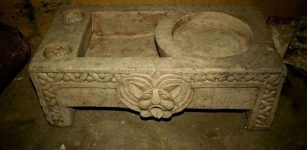 Roman-Era Residence Unearthed In Ancient Capital Of Memphis, Egypt
Archaeology | Sep 27, 2018
Roman-Era Residence Unearthed In Ancient Capital Of Memphis, Egypt
Archaeology | Sep 27, 2018 -
 Viklaumadonna Hides A Thousands-Year-Old Secret
Artifacts | Jan 5, 2020
Viklaumadonna Hides A Thousands-Year-Old Secret
Artifacts | Jan 5, 2020 -
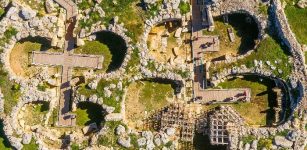 Ggantija Double Temple On Malta Is Older Than Stonehenge And Great Pyramid Of Giza
Civilizations | Jan 16, 2023
Ggantija Double Temple On Malta Is Older Than Stonehenge And Great Pyramid Of Giza
Civilizations | Jan 16, 2023 -
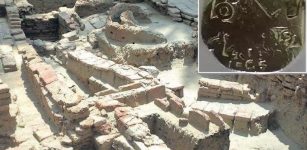 Keeladi Ancient Site Of Tamil Nadu – A Punch-Marked Silver Coin Unearthed
Archaeology | Jul 31, 2021
Keeladi Ancient Site Of Tamil Nadu – A Punch-Marked Silver Coin Unearthed
Archaeology | Jul 31, 2021 -
 Aegir – Jotun Lord Of The Stormy Seas Revered And Feared By Norsemen
Featured Stories | Sep 6, 2019
Aegir – Jotun Lord Of The Stormy Seas Revered And Feared By Norsemen
Featured Stories | Sep 6, 2019 -
 Battle Of Cape Ecnomus: One Of The Greatest Naval Battles In History
Ancient History Facts | Jun 17, 2019
Battle Of Cape Ecnomus: One Of The Greatest Naval Battles In History
Ancient History Facts | Jun 17, 2019 -
 Secrets Of The Lost Ancient Sahara Civilization
Civilizations | Oct 26, 2018
Secrets Of The Lost Ancient Sahara Civilization
Civilizations | Oct 26, 2018 -
 Unique Glass Bead From The Time Of Jesus Discovered In Fire Pit In Sweden
Archaeology | Jun 17, 2017
Unique Glass Bead From The Time Of Jesus Discovered In Fire Pit In Sweden
Archaeology | Jun 17, 2017 -
 Loss Of Rainforests, Grasslands In Southeast Asia Caused Extinction Of Megafauna And Ancient Humans
Archaeology | Oct 10, 2020
Loss Of Rainforests, Grasslands In Southeast Asia Caused Extinction Of Megafauna And Ancient Humans
Archaeology | Oct 10, 2020 -
 How The Great Sphinx Gave Thutmose IV Power To Become Pharaoh
Civilizations | Jul 19, 2021
How The Great Sphinx Gave Thutmose IV Power To Become Pharaoh
Civilizations | Jul 19, 2021 -
 On This Day In History: Sweden Declares War On Its Ally The United Kingdom – On Nov 17, 1810
News | Nov 17, 2016
On This Day In History: Sweden Declares War On Its Ally The United Kingdom – On Nov 17, 1810
News | Nov 17, 2016 -
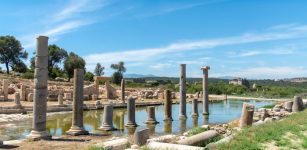 New Study Shows How The Ancient World Adapted To Climate Change
Archaeology | Jun 28, 2022
New Study Shows How The Ancient World Adapted To Climate Change
Archaeology | Jun 28, 2022 -
 The Ebers Papyrus – Most Famous Plant Medicine ‘Encyclopedia’ Of Ancient Egypt
Civilizations | Feb 3, 2016
The Ebers Papyrus – Most Famous Plant Medicine ‘Encyclopedia’ Of Ancient Egypt
Civilizations | Feb 3, 2016 -
 Great Migrations Took Place In Poland And Ukraine In Bronze Age
Archaeology | Sep 8, 2023
Great Migrations Took Place In Poland And Ukraine In Bronze Age
Archaeology | Sep 8, 2023 -
 Slovenia’s Unique Discovery Of Masts, Sails And Small Harbor Found At The Bottom Of The Adriatic Sea
Archaeology | Apr 2, 2024
Slovenia’s Unique Discovery Of Masts, Sails And Small Harbor Found At The Bottom Of The Adriatic Sea
Archaeology | Apr 2, 2024


